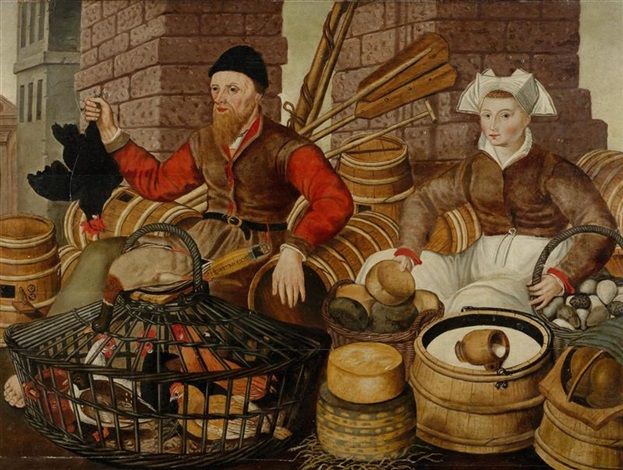Trades in Ancient Mesopotamia

Contents
- Introduction
- Early Trade of Ubaid Period
- Uruk Period Trade
- Trade During Akkadian Period
- The Hammurabi period
- Source

Introduction
Ancient Mesopotamia was an important region for the development of trade. It has been credited with being one of the first areas to establish a system of commerce, which it did as far back as 5000 BC. The earliest evidence of this dates back to Uruk, in modern-day Southern Iraq, where archaeological digs have unearthed ancient trading posts.
The people of Ancient Mesopotamia traded goods from many parts of the world, including spices from India and other exotic items from Egypt and Syria. As well as importing luxury goods such as gold and silver, they also exported textiles and agricultural products such as dates from their own lands. Bartering was often used to make transactions but eventually, coins were introduced that could be used for buying and selling goods throughout the region.
Early Trade of Ubaid Period
The Ubaid period has long been recognized as a key moment in the development of human civilization. This era, which lasted from 5500 to 4000 BC in Mesopotamia, saw the emergence of large-scale agricultural societies and the growth of trade networks that were integral to the region’s economic success. The Ubaid period is thus seen as a major turning point for Mesopotamian civilizations and for global trade.
Historical evidence suggests that trade was widespread throughout Mesopotamia during the Ubaid period. Archaeological records indicate that merchants regularly exchanged goods over long distances, travelling from city-states such as Susa and Uruk up and down rivers in boats packed with pottery, foodstuffs and other commodities.
Uruk Period Trade
The Uruk period of Mesopotamia (c. 4100-2900 BCE) was a time of great commercial activity and widespread trade networks were established throughout the region. This was largely due to the emergence of urban centres in the area, such as Uruk itself, which acted as central hubs for goods moving in and out of the region. The materials used for trading during this period demonstrate just how far-reaching these trade networks had become; objects discovered at sites throughout Mesopotamia include metals, semi-precious stones, ceramics, textiles and even food items from many different areas. These long-distance networks were most likely facilitated by large-scale public works projects like canals or roads which allowed merchants to easily traverse distances with their wares.
In Uruk Period Mesopotamians established their trade networks with Egypt. Mesopotamia and Egypt were two of the earliest civilizations in human history. Both developed strong trading networks that allowed goods and resources to flow across the region, as well as beyond into other regions. Trade between Mesopotamia and Egypt was a major part of this Middle Eastern exchange system, with goods such as metals, precious stones, wood, pottery, fabrics and grains being exchanged between the two regions.
Evidence suggests that this trade relationship between Mesopotamia and Egypt began in the 3rd millennium BCE (Before Common Era) when small-scale exchange occurred via caravans which carried goods along routes known as ‘incense roads’. By the 2nd millennium BCE, these exchanges had become more frequent – with larger quantities of goods being traded – largely thanks to advances in maritime trade technologies.
Many Scholars say that Mesopotamian trade influenced Egyptian Civilisation in many ways such as their Art and Architecture. Egyptian glass-making and statue-making were influenced by Mesopotamian art according to Archaeological evidence.
Trade During the Akkadian Period
The Early Dynastic Akkadian period, which lasted from around 2334 BCE to 2154 BCE, was an era of growth and prosperity in Mesopotamia. During this time, the Akkadian Empire flourished and trade increased dramatically. This flourishing trade can be seen through archaeological evidence as well as textual evidence from cuneiform tablets found at various sites throughout the ancient Near East.
Trade during the Early Dynastic Akkadian period consisted mostly of everyday goods such as grain, oil, and cloth. These goods were transported along major roads connecting major cities in Mesopotamia such as Babylon and Uruk. Additionally, luxury items such as metals, semi-precious stones, ivory objects and even slaves were traded across wider trading networks involving countries like Egypt and Syria. Participation in these trades helped build up a strong economy for the empire that would last for centuries afterwards.
The Hammurabi period
Hammurabi Period in Mesopotamia, lasting from 1792-1750 BCE, was a time of great social, political and economic progress. With the rise of the Babylonian Empire came increased trade and commerce between distant cities and nations. Evidence from archaeological excavations has revealed that during this period, extensive trade networks were established to facilitate the exchange of goods between Egypt, Assyria and other regional powers.
Trade flourished in many areas such as luxury items such as spices, perfumes, jewellery and high-quality pottery; agricultural products like wheat or barley; textiles for clothing; timber for construction; metals including copper and bronze for tools; livestock such as cows or camels; fish caught in local rivers; and even slaves. These goods were exchanged through seaports on the Persian Gulf or transported overland via caravan routes across Anatolia.
Source
Ancient Civilizations, by Dr Brian Fagan and Chris Scarre, 2015.


